BOISE (Day 5 - part 1)
Today we headed to Boise. We parked by a park and walked through a lovely residential area into the main downtown.


Rows of lovely homes
The Cathedral of St John the Evangelist (or more simply known as St Johns Cathedral). The first church was dedicated in 1870, but it burned down 18 days later. Another one was built in 1883, but it was realized that a much larger one was needed due to the rapid growth of the city. This land was built and the cornerstone of this building was laid in 1906. So as not to be a financial drain, it was built in stages. The walls and roof were completed in 1912 and the rest was completed in 1921.




(right) Statue of St. John the Evangelist

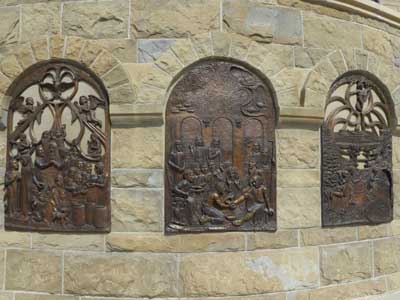
The brass-relief sculptures located at the base of the stairs contain three scenes from the Gospel of St. John, including the Wedding at Cana, the Washing of the Feet, and the Race to the Tomb.
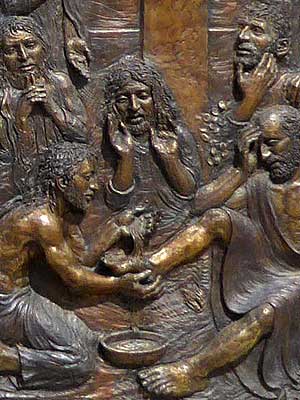



(right) This replica of La Pietà, created from a mold of the original, was on loan to the cathedral for one year, courtesy of the Church of Jesus Christ of Latter-day Saints. It was made with a bonded marble blend and finish, under license with the Vatican Observatory Foundation.


The stained glass windows were designed and installed in 1920.






We then walked down to the capitol building.
Boise was not Idaho's first capital city. In 1863, when the Idaho Territory was created, the booming town of Lewiston was chosen. But by 1864, gold discoveries in the Boise Basin had lured much of the population south.
In 1885, the territorial legislature approved construction of a capitol building. Construction of the 4-story Territorial Capitol was completed in 1886. While it had steam heat, it lacked indoor plumbing. Livestock also roamed the gardens, eating the flowers and trees.
The building was torn down in 1919 during construction of the first Capitol building in the same location, which had begun in 1905. The building has since been restored twice. It is also the only state capitol heated by geothermal water. Boise sits atop a large, naturally occurring geothermal resource where water is pumped from three thousand feet underground.



The Senate is in the west wing while the House of Representatives is in the east wing.


The 26-foot-tall "lantern" is the very top section of the dome. The stones used in its construction were very large. Several pieces weigh 3 tons each, and one is over 9 feet wide. ... The original architect's drawings had a flag on top of the dome, but in 1912, during the course of construction, an eagle was substituted. Made of copper with a bronze finish, it's 5 foot 7 inches tall and weights 250 pounds.


This staircase clearly leads up into the dome.


A copy of the liberty bell guards the entrance

The Great Seal was adopted in 1891. it is the only state seal designed by a woman, Emma Edwards Green. The motto means "May it endure forever". The miner represents the chief industry at the time, while the woman holds scales, representing justice, freedom and equality.
We entered at the garden level, which was filled with numerous exhibits and history.



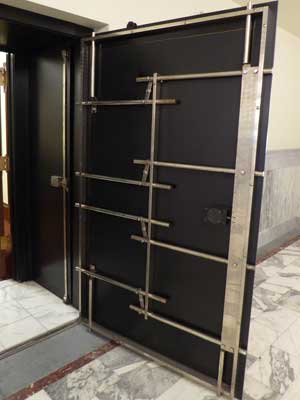
This vault was once used for record storage.


The old Territorial Capitol ... and the new capitol building (under construction in 1912)

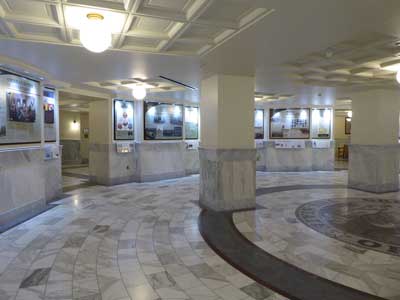
Exhibit layout


A mosaic of the state seal

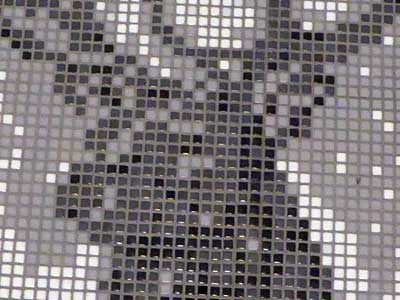
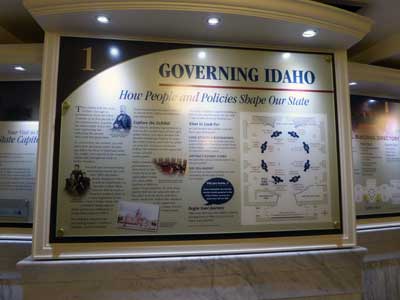
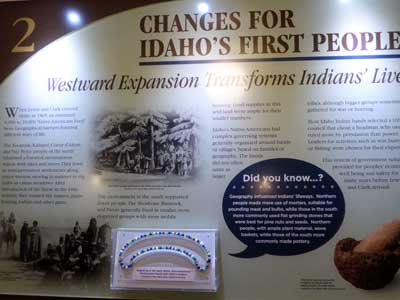
When Lewis and Clark entered Idaho in 1805, some 6,000 to 10,000 Native Americans lived here. They had semi-permanent settlements and seasonal migrations. These small bands did not unite as larger tribes.

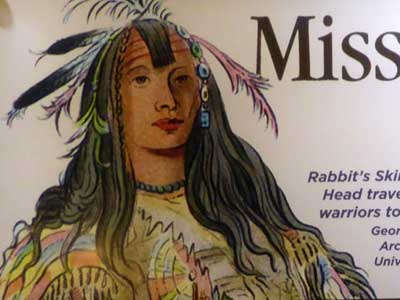
These two Nez Perce warriors were named Rabbit Skin Leggings and No Horns on His Head!


One acting governor drank himself to death a mere 7 months into the job; the next stole the entire treasury of over $41,000; another governor stole over $46,000 from Indian Affairs fund... and the stories go on and on!

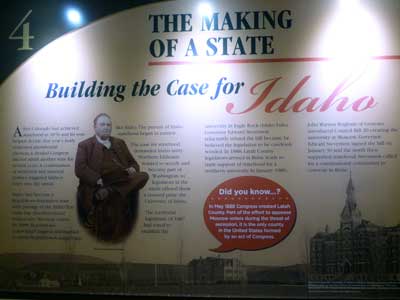
In 1860, eastern Washington and northern Idaho tried to secede and create their own territory, called Columbia. Meanwhile, Nevada tried to annex southern Idaho.... which would have made the state nonexistent. Fortunately these bills didn't pass.
return • continue

